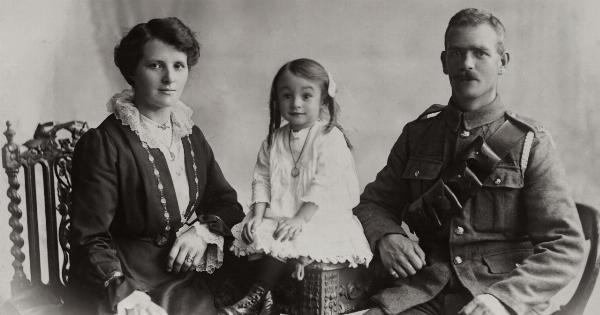Throughout history, women have played a significant role in shaping societies, cultures, and economies. While many of their contributions have been overlooked or minimized, it is crucial to uncover and celebrate the hidden history of women.
By shedding light on the remarkable achievements and struggles of women, we can gain a deeper understanding of the progress that has been made and the work that still needs to be done to achieve gender equality. In this article, we will explore four intriguing data points that highlight the hidden history of women.
1. The Impact of Women on STEM Fields
Although traditionally male-dominated, women have made notable contributions to science, technology, engineering, and mathematics (STEM) fields throughout history.
Despite facing immense challenges and discrimination, women pioneers have defied societal expectations and blazed trails in various scientific disciplines.
One such remarkable woman is Ada Lovelace, an English mathematician who is often considered the world’s first computer programmer.
In the mid-19th century, Lovelace developed an algorithm for Charles Babbage’s Analytical Engine, a mechanical general-purpose computer. Her visionary work laid the foundation for the modern computer age and showcases the immense potential of women in STEM.
Another trailblazer in the field of physics is Marie Curie. Curie’s groundbreaking research on radioactivity earned her not only the first Nobel Prize in Physics but also the first Nobel Prize ever awarded to a woman.
Her discoveries revolutionized the understanding of atomic structure and radiation, shaping the field for years to come. Curie’s achievements highlight the often-underestimated capabilities of women in scientific exploration and discovery.
2. Women’s Role in the Civil Rights Movement
While the Civil Rights Movement of the 20th century is often associated with prominent male figures like Martin Luther King Jr. and Malcolm X, women played an instrumental role in advancing the cause of racial equality.
African American women, in particular, faced intersecting forms of discrimination based on both their gender and race.
One iconic figure in the fight for civil rights is Rosa Parks. In 1955, Parks refused to give up her bus seat to a white passenger in Montgomery, Alabama, sparking the Montgomery Bus Boycott.
Her act of defiance and the subsequent boycott became catalysts for the Civil Rights Movement. Parks’ bravery demonstrates the pivotal role women played in challenging segregation and systemic racism.
Another influential woman in the Civil Rights Movement was Ella Baker.
As a prominent civil rights activist and community organizer, Baker worked tirelessly behind the scenes, empowering grassroots movements and advocating for equal rights for all African Americans. Her contributions to the movement, often overlooked, are a testament to the significance of women’s involvement in the fight for justice.
3. Women’s Economic Contributions
Throughout history, women have made substantial economic contributions, often in invisible or undervalued roles.
Until relatively recently, their work and contributions were largely unacknowledged and unpaid, adding to the hidden history of women’s economic impact.
During World War II, for example, women stepped up to fill essential roles in industries as men left to fight on the frontlines. These “Rosie the Riveters” worked in factories, producing military supplies and equipment.
Their efforts were instrumental in supporting the war effort and often went unrecognized or were downplayed once the war ended.
Another aspect of women’s economic contributions is seen in the realm of caregiving and household work. Historically, women have borne the majority of responsibility for unpaid domestic labor such as cooking, cleaning, and childcare.
These invisible contributions enable societies to function smoothly, yet they often go uncompensated and undervalued.
4. Women’s Artistic Achievements
The art world has historically undervalued and marginalized women artists, resulting in their works being overshadowed or forgotten. However, countless women have defied these limitations and made significant artistic contributions throughout history.
One notable artist is Frida Kahlo, a Mexican painter known for her self-portraits and exploration of identity. Kahlo’s work explored themes of gender, race, and postcolonialism, challenging traditional artistic norms.
Her unique artistic voice, often inspired by her personal experiences and struggles, has left an indelible mark on the art world and continues to inspire artists to this day.
Another remarkable woman artist is Artemisia Gentileschi, an Italian Baroque painter. Despite facing adversity as a woman in a male-dominated field, Gentileschi became one of the most accomplished painters of her time.
Her powerful and emotionally charged paintings often depicted strong, heroic women from historical and mythological contexts.
These data points offer just a glimpse into the hidden history of women and the extraordinary contributions they have made throughout time.
By recognizing and celebrating these achievements, we honor the resilience, talent, and perseverance of women in the face of societal barriers. It is crucial to continue uncovering and sharing these stories to ensure a more inclusive and accurate understanding of history.































